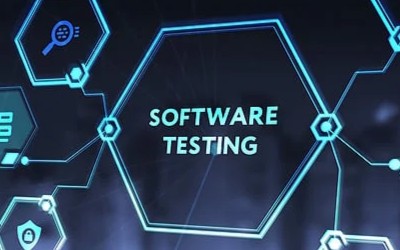Highlights:- Advanced Threat Protection: Develop expertise in identifying and mitigating advanced persistent
threats (APTs) and sophisticated attacks. - Advanced Penetration Testing and Exploitation:...
Highlights:
- Advanced Threat Protection: Develop expertise in identifying and mitigating advanced persistent
threats (APTs) and sophisticated attacks. - Advanced Penetration Testing and Exploitation: Gain hands-on experience with advanced
techniques in penetration testing, including exploiting zero-day vulnerabilities. - Advanced Incident Response and Forensics: Learn advanced incident response strategies andforensic techniques for large-scale cyberattacks. - Cybersecurity for Critical Infrastructure: Understand the unique security needs of critical
infrastructure such as power grids, transportation systems, and healthcare.
- Security Architecture and Design: Master the principles of designing secure enterprise architecturesand secure systems. - Cloud and IoT Security: Learn how to secure cloud environments and the Internet of Things (IoT)
devices from advanced threats. - Advanced Malware Analysis and Reverse Engineering: Dive deep into malware analysis techniquesand the reverse engineering of sophisticated malware. - Governance, Risk, and Compliance: Explore advanced strategies for ensuring compliance withindustry regulations and managing security risks
Course Objective:
By the end of this course, you will be able to: - Design, implement, and manage advanced security solutions for large, complex networks. - Conduct advanced penetration testing and exploit zero-day vulnerabilities. - Lead incident response efforts for large-scale cyberattacks and analyze attack patterns. - Develop and deploy security measures for critical infrastructure systems. - Secure cloud environments and IoT networks using advanced techniques. - Perform in-depth malware analysis and reverse engineering to understand and mitigate threats. - Implement governance, risk management, and compliance strategies in large organizations
Course Structure:
1. Advanced Threat Protection
- Understanding Advanced Persistent Threats (APTs): Identifying and mitigating the risks posedbysophisticated threat actors. - Threat Hunting: Techniques for proactively identifying hidden threats within large networks. - Evasion Techniques: Understanding how attackers evade detection and how to defend against
these tactics. - Threat Mitigation: Developing and deploying strategies to neutralize high-level cyber threats.
- Red Team vs Blue Team: The roles and dynamics of simulated attack and defense teams inlarge- scale security exercises.
2. Advanced Penetration Testing and Exploitation
- Advanced Penetration Testing Techniques: Exploiting vulnerabilities in complex systems andnetworks. - Zero-Day Exploits: Understanding and exploiting unknown vulnerabilities in software and systems. - Exploiting Web Application Vulnerabilities: Advanced techniques for attacking web applications
and their defenses. - Post-Exploitation and Lateral Movement: Maintaining control within a compromised networkandescalating privileges. - Advanced Social Engineering: Tactics used by attackers to manipulate individuals within
organizations. - Reporting Advanced Findings: Best practices for documenting and reporting findings in complexpenetration tests.
3. Advanced Incident Response and Forensics
- Advanced Incident Response Strategies: Leading teams to effectively respond to sophisticatedsecurity incidents. - Forensic Investigations: Techniques for tracing and investigating security breaches, including datarecovery and evidence preservation. - Threat Intelligence in Incident Response: Integrating real-time threat intelligence into responseefforts. - Large-Scale Incident Management: Coordinating multi-team responses to large, high-impact
cyberattacks. - Post-Incident Remediation: Understanding root cause analysis and applying lessons learnedtoimprove defenses.
4. Cybersecurity for Critical Infrastructure
- Understanding Critical Infrastructure: The unique security challenges faced by industries suchas
energy, transportation, and healthcare.
- Securing Industrial Control Systems (ICS): Protecting SCADA and other critical systems fromcyber
threats. - Cybersecurity in the Cloud: Best practices for securing cloud-based critical infrastructure andensuring availability. - Resilience and Continuity: Developing disaster recovery and business continuity strategies for
critical systems. - Advanced Security Monitoring: Leveraging advanced monitoring tools to secure critical
infrastructure environments.
5. Security Architecture and Design
- Secure Architecture Principles: Designing highly secure enterprise architectures that can
withstand sophisticated attacks. - Layered Security Approach: Applying multiple layers of defense to minimize security risks. - Redundancy and High Availability: Ensuring continuous operation and data integrity during attacksor system failures. - Zero Trust Security Model: Implementing a zero-trust security model to reduce internal andexternal risks. - Secure System Integration: Developing and integrating secure systems that interact with other
platforms while maintaining confidentiality and integrity.
6. Cloud and IoT Security
- Cloud Security: Understanding the security risks and best practices for securing cloud
environments (IaaS, PaaS, SaaS). - IoT Security: Addressing vulnerabilities in Internet of Things devices and networks. - Securing Data in the Cloud: Protecting data confidentiality and integrity in multi-tenant cloudenvironments. - Secure IoT Architecture: Designing secure IoT systems that protect user privacy and prevent
unauthorized access. - Compliance in Cloud and IoT Environments: Ensuring security controls are in place for compliancewith industry regulations.
7. Advanced Malware Analysis and Reverse Engineering
- Malware Classification: Analyzing different types of malware, including rootkits, ransomware, andadvanced trojans. - Static and Dynamic Malware Analysis: Using reverse engineering tools to analyze malware codeand understand its behavior. - Anti-Malware Techniques: Understanding the techniques used by malware to evade detectionandhow to bypass them. - Disassembling and Debugging Malware: Advanced techniques for disassembling and debuggingmalware samples. - Developing Anti-Malware Tools: Creating your own tools to detect, analyze, and neutralize
advanced malware.
8. Governance, Risk, and Compliance
- Advanced Risk Management: Techniques for managing risks in large, complex organizations. - Cybersecurity Regulations and Industry Standards: A deep dive into regulatory frameworks suchas ISO 27001, NIST, and GDPR. - Security Audits and Assessments: How to conduct thorough security audits to ensure complianceand uncover vulnerabilities. - Compliance Automation: Using tools and technologies to automate compliance monitoring andreporting. - Data Privacy and Protection: Implementing security and privacy measures to protect sensitivedata in accordance with regulations.
9. Capstone Project and Real-World Applications
- Hands-on Security Labs: Apply advanced techniques in penetration testing, malware analysis, andincident response. - Designing a Cybersecurity Strategy: Develop a comprehensive cybersecurity plan for a largeorganization or critical infrastructure. - Leading a Security Incident Response: Lead a simulated response to a large-scale security breachand document your findings.
- Advanced Penetration Test Simulation: Perform a penetration test using advanced techniques andpresent your findings. - Final Project Presentation: Present a detailed analysis of your security strategy, penetrationtests, and incident response efforts.
Learning Methodology:
- Interactive Lessons: Engage in in-depth tutorials and case studies focusing on advanced
cybersecurity topics. - Lab-Based Learning: Work on complex real-world scenarios to sharpen your skills in penetrationtesting, malware analysis, and incident response. - Assessments and Quizzes: Reinforce learning with quizzes, assignments, and hands-on project
assessments. - Live Sessions: Participate in live technical sessions with instructors for troubleshooting and
advanced discussions. - Discussion Forums: Collaborate with peers and industry experts to exchange insights and solutionsto complex problems.
Who Should Enroll:
- Experienced Cybersecurity Professionals: Individuals with a strong background in cybersecurity whowish to deepen their knowledge and leadership capabilities. - Advanced Penetration Testers: Professionals looking to enhance their skills in ethical hacking andcomplex exploitation techniques. - Incident Response Experts: Cybersecurity professionals who wish to learn advanced incident
response strategies for large-scale attacks. - Security Architects: IT professionals involved in designing enterprise-level security infrastructures. - Governance and Compliance Experts: Professionals focused on ensuring regulatory complianceandmanaging risks in large organizations. - Students: Advanced learners in computer science, information technology, or cybersecurity lookingto specialize in high-level security challenges.
This Cyber Security Advanced course will provide you with the deep expertise and hands-on
experience necessary to lead advanced security operations in complex environments. Whether
you're focusing on penetration testing, malware analysis, or critical infrastructure security, this
course offers the training to advance your career and tackle the most challenging cybersecurity
issues in the modern world.













